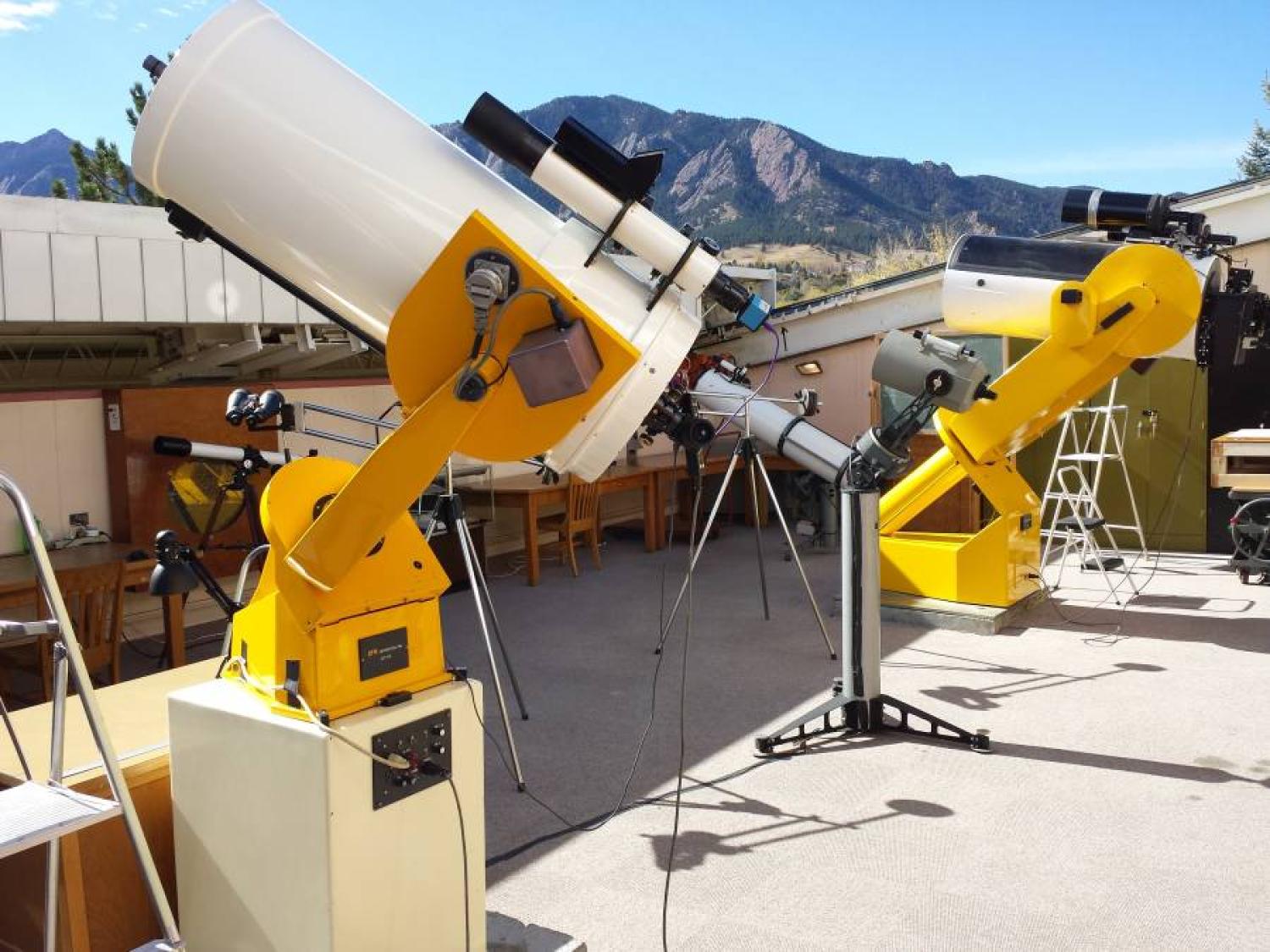Retired 18- and 16-inch DFM Telescopes

SBO 16- and 18-inch Telescopes.
This telescope was the first commercial telescope ever built and sold by the just-started DFM Engineering Company. It was retired in 2017.
The telescope was one of the first computer-controlled telescopes of its era. It was originally driven by a DFM-built 8086-cpu based computer, with individual wire-wrapped one-of-a-kind control boards and a memory of about 8 kilobytes. Operator control was via thumbswitch settings, with information displayed by an array of discrete LED characters.
For the first five years, the telescope sat on the open deck, and hence had to be protected from the elements with a clamshell cover. The Observing Deck was subsequently covered with a roll-off roof, shown at left, which also permitted the addition of the 16-inch telescope as well.
Eventually, the telescope control system (TCS) was upgraded to a PC-based system, with familiar keyboard controls and monitor display. The control computer was also linked to an auxiliary PC running The Sky planetarium-style computer control software, plus CCDSoft camera control software, both from Software Bisque. All an operator had to do is to click on a star on the planetarium display, and tell the computer to "go to it" - and in a few seconds, the object was centered in the eyepiece of the 18-inch.
The 18-inch telescope had a unique flip secondary mirror that provides either f/8 or f/16 optical paths - enabling it to be optimized for planetary or deep-sky viewing. Not only could the telescope be used for visual viewing and 35mm photography, it was also equipped with a 4"x5" film holder, internal shutter, and 6" filter holder for large-format astrophotography. But the most popular form of "picture taking" used by astronomy students is with the ST-6 CCD imager from the Santa Barbara Instrument Group.
The most commonly-used and convenient arrangement for CCD imaging was the piggy-back telescope mode. In this configuration, observers were still free to use the main telescope for visual eyepiece observations, while the camera is simultaneously acquiring a nearly-identical view through the 8-inch Celestron riding on top of the 18-inch. Alternate modes included mounting the camera at the focus of the 18-inch itself, and for wide-field shots, piggyback using a 180-mm focal length telephoto lens.
The 16-inch, f/12 Cassegrain telescope was added to the SBO collection of pier-mounted telescopes in 1987 (and retired in 2017), after the roll-off roof addition to the student observing deck was completed. The telescope sat on a concrete pier which is isolated from the surrounding deck, and which extended two floors through the building into bedrock - placing both it and the 18-inch on a "rock-solid" foundation.
Like the 18-inch along side it, this telescope was a product of DFM Engineering, and included a computer controller (originally an Apple IIe, and then a 486 PC) that permitted accurate acquisition and tracking of celestial objects with a few keystrokes.
In fact, both the 16-inch and 18-inch telescopes operated under virtually identical software packages and telescope control systems (TCS) hardware - so that learning to "drive" one telescope was equivalent to learning the other. The 16-inch had a built-in "library" of the 225 most popular celestial objects, including all objects in the Messier and the Mullaney & McCall catalogs. For other objects, such as planets, the telescope was either aimed via handpaddle controls, or by keying in the desired coordinates to the computer.
Pointing accuracy was good to about 20 arc-seconds (the separation between a car's headlights seen from 10 miles away!), and the TCS system automatically handled pointing adjustments to compensate for precession (the wobble of the Earth's axis) and atmospheric refraction (which elevates the apparent location of an image above the true direction to the object). The 16-inch was used primarily for visual observations, although it was easily fitted to accommodate 35mm cameras for conventional astrophotography.


